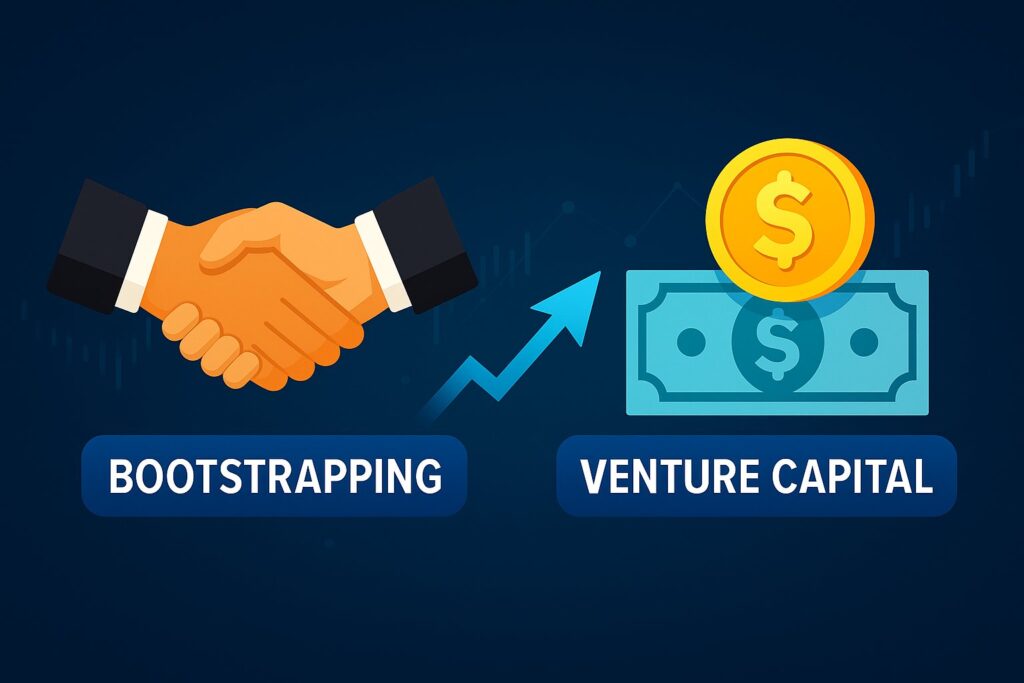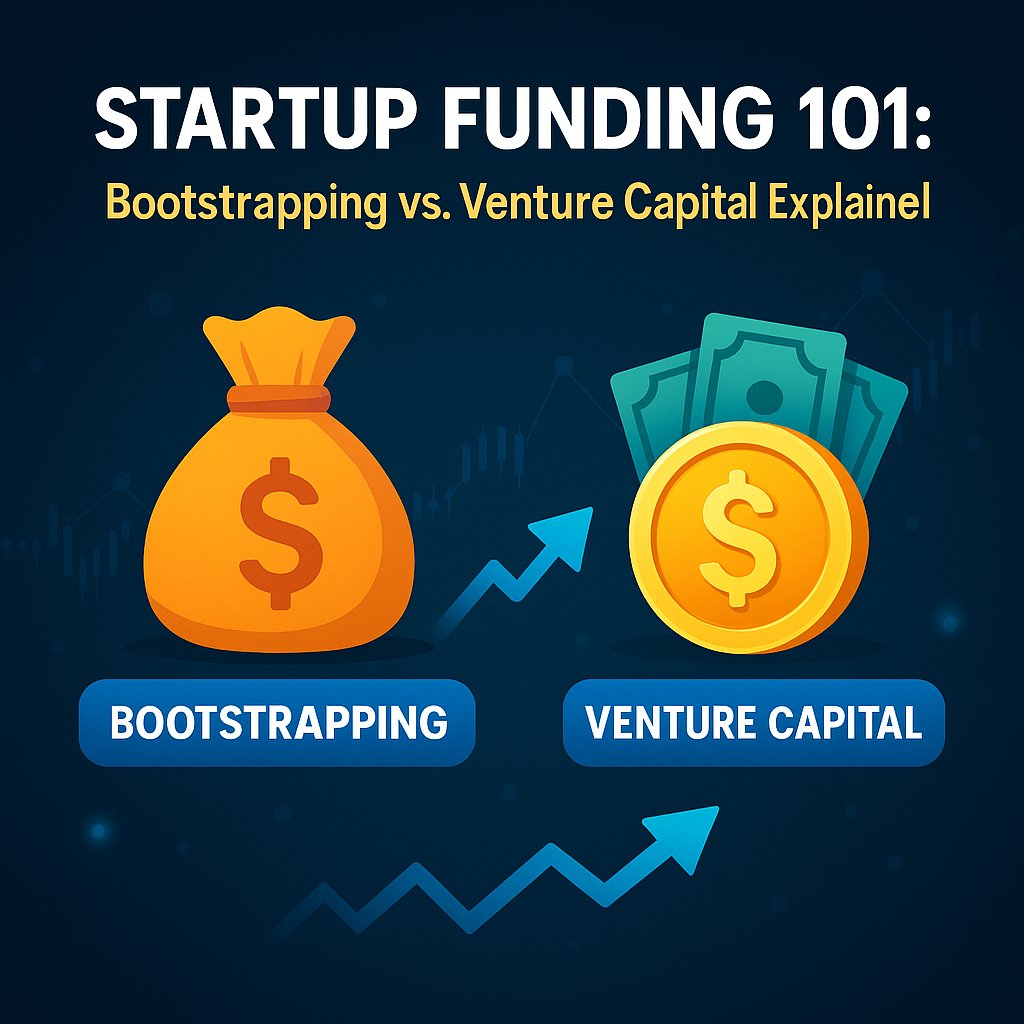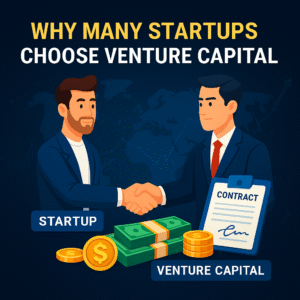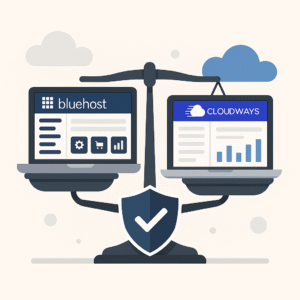Ever wondered why some startups grow into global giants overnight, while others quietly build sustainable empires for years? A big part of the answer comes down to how they fund themselves.
Choosing between bootstrapping and venture capital isn’t just about cash. It’s about the life you want to lead as a founder — how much control you keep, how quickly you grow, and who you ultimately answer to.
This guide dives into both approaches, so you can pick the one that truly matches your dreams (and avoid some expensive mistakes along the way).
💡 Why Funding Shapes Your Entire Business
Imagine two founders with the same brilliant idea. One self-funds for years, moving carefully, optimizing every dollar. The other lands a $5 million VC round and races to hire 30 people in six months.
Which one wins?
Honestly, either might — depending on the market, timing, or sheer luck. But their companies (and lifestyles) will look completely different because of how they chose to fund their dream.
Money isn’t just money. It’s about:
✅ Who controls your roadmap
✅ How patient you can be with profits
✅ Whether you sleep well at night or sweat payroll every month
Before jumping in, let’s explore what these paths actually look like.
💪 Bootstrapping: Growing with Your Own Money
Bootstrapping is startup-speak for funding your business yourself — through savings, early revenues, maybe small family loans. No VCs, no big checks, just you (and possibly your co-founders) carrying the load.
🎯 Why founders love it
- Freedom: You answer to customers, not investors. Want to pivot? Pause growth? Sell? It’s your call.
- Ownership: 100% of profits (or a future sale) is yours.
- Better priorities: Many bootstrappers focus on making a great product people actually pay for, instead of chasing vanity metrics.
It’s the approach we break down in detail in our upcoming post, Best Tools for Lean Startups, so you can see exactly how others grow smart with limited cash.
🚧 Why it’s hard
- Slow motion: Without extra funding, you might not hire fast enough to capitalize on a trend.
- Stressful cash flow: If customers delay payments or sales drop, your rent still needs paying.
Personal risk: Many use personal savings or max out credit lines. That’s fine if things go well — terrifying if not.
🚀 Venture Capital: Taking the Fast Lane
VC funding is the shiny alternative: raising outside money in exchange for equity. If your idea fits a large, risky, but potentially explosive market, investors will throw millions at you — hoping you’ll become the next Uber or Airbnb.
⚡️ What this means in practice
- You’ll polish decks, pitch partners, and negotiate valuation.
- Once you close funding, you’re expected to grow big, fast.
- You might bring on senior hires overnight, open new offices, or outspend competitors in marketing.
Want to see examples? Our post Why Many Startups Choose Venture Capital goes deeper into when it truly makes sense.
🎯 Why it works for some
- Speed: With millions in the bank, you can hire world-class teams or attack new markets without waiting on profits.
- Connections: VCs often introduce you to customers, press, or acquirers.
- Validation: Having top investors on board builds trust with other partners and even future employees.
🚩 The flipside
- Dilution: You might own just 20-40% of your company after multiple rounds.
- Pressure: Investors expect huge returns. If your growth slows, you might be pushed to pivot or even sell.
- Less personal control: Big decisions often require investor sign-off.
“Most venture capital firms look for high-growth opportunities that could return 10x or more, according to Y Combinator’s advice on raising.”

🏗 Real Startup Stories to Learn From
🛠 Bootstrapping legends
- Basecamp avoided VC entirely, building a wildly profitable software business that allowed them to shape their own culture.
- Mailchimp grew from a tiny side project to a multi-billion dollar acquisition — all without taking investor money for nearly 20 years.
We cover how they did it in Lean Success: Startups That Thrived Without Venture Capital.
🚀 The big VC bets
- Airbnb needed hundreds of millions to fight local regulations, build trust systems, and scale globally.
- Stripe poured investor cash into onboarding developers worldwide before they ever turned a profit.
Read more about these moonshots in our upcoming guide VC-Backed Startups That Changed the World.
⚖️ How Legal & Banking Fit Into the Picture
It doesn’t matter if you’re bootstrapping or raising $10 million: at some point, you’ll need to:
✅ Register your company legally (LLC, C-Corp, or equivalent in your country)
✅ Get a business bank account
✅ Start keeping clean books for taxes and investor due diligence
💡 Pro tip:
Depending on where you’re based and your business type, it’s smart to explore local legal & accounting services early on.
Each country has its own providers, from small accountants to sophisticated online platforms, who can help you register, stay compliant, and avoid surprise tax bills.
It also helps to have flexible banking for global payments. That’s why many founders look into multi-currency options — you’ll find more on this in our future post Revolut vs. Wise vs. Skrill for Startups.
🚩 Avoiding Classic Funding Pitfalls
No matter your path, watch out for:
- Getting dazzled by press: Big valuations make headlines, but profits pay bills.
- Over-hiring too soon: Spending like a giant before your revenue supports it can kill even VC-backed firms.
Ignoring cash flow basics: Even unicorns have failed because they couldn’t pay suppliers on time.
🧰 Smart Tools Every Startup Should Consider
No matter how you fund your company — bootstrapping carefully or fueled by venture capital — using the right tools can make all the difference. They keep your team organized, help you understand customers, and ensure your finances stay healthy.
Here are some essentials to explore:
📈 Project & team management
Asana and Trello help you plan, assign, and track tasks so nothing slips through the cracks.
Monday.com scales well if your projects get complex or cross multiple teams.
💬 Communication that grows with you
Slack is perfect for quick discussions and integrates with hundreds of other apps.
Many startups also lean on Discord or Teams, depending on their culture.
💳 Payments & banking
Accept online payments seamlessly with Stripe.
Manage global expenses through Revolut Business, Wise, or even Skrill, depending on where your suppliers and clients are.
📣 CRM & email marketing
Use ConvertKit or Mailchimp to start building an audience.
HubSpot CRM is a solid free tool that grows into a full sales machine if you scale.
🔍 Customer insights & analytics
Learn what visitors do on your site with Hotjar heatmaps.
Don’t skip Google Analytics / GA4 — it’s still the backbone of web data.
💡 Pro Tip:
Start small. Don’t overload your startup with too many tools at once. Pick the essentials for your stage, master them, and layer on more as your needs (and budget) grow.
❓ FAQs Every Founder Asks
🔹 Can I bootstrap now and raise later?
Absolutely. Many smart founders start lean, prove demand, then raise money once their valuation is stronger.
🔹 Should I incorporate right away?
If you’re serious, yes. Even bootstrappers should form a company early to protect personal assets. You’ll need it for payment processors, banking, and taxes.
🔹 What about tools to run lean?
In Best Tools for Lean Startups, we go through everything from project management to lightweight CRMs, so you can stay focused on customers, not paperwork.
📝 Conclusion
Here’s the truth most founders learn the hard way: there is no single right way to fund a startup.
It depends on your industry, your risk tolerance, your personal life. Bootstrapping gives freedom and keeps your equity. Venture capital lets you go big — but you share control and face pressure for explosive growth.
Whichever you choose, build smart:
- Lay strong legal and financial foundations.
- Stay laser-focused on actual paying customers.
- And remember — you’re not just building a business, you’re shaping your entire future.




